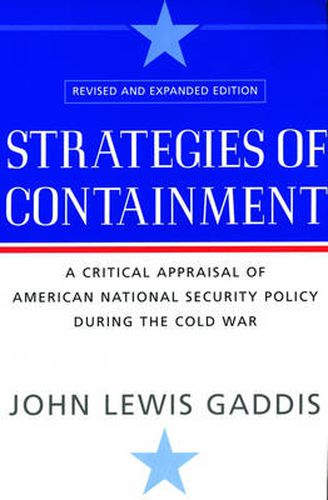Readings Newsletter
Become a Readings Member to make your shopping experience even easier.
Sign in or sign up for free!
You’re not far away from qualifying for FREE standard shipping within Australia
You’ve qualified for FREE standard shipping within Australia
The cart is loading…






When Strategies of Containment was first published, the Soviet Union was still a superpower, Ronald Reagan was president of the United States, and the Berlin Wall was still standing. This updated edition of Gaddis’ classic carries the history of containment through the end of the Cold War. Beginning with Franklin D. Roosevelt’s postwar plans, Gaddis provides a thorough critical analysis of George F. Kennan’s original strategy of containment, NSC-68, The Eisenhower-Dulles New Look, the Kennedy-Johnson flexible response strategy, the Nixon-Kissinger strategy of detente, and now a comprehensive assessment of how Reagan - and Gorbechev - completed the process of containment, thereby bringing the Cold War to an end. He concludes, provocatively, that Reagan more effectively than any other Cold War president drew upon the strengths of both approaches while avoiding their weaknesses. A must-read for anyone interested in Cold War history, grand strategy, and the origins of the post-Cold War world.
$9.00 standard shipping within Australia
FREE standard shipping within Australia for orders over $100.00
Express & International shipping calculated at checkout
When Strategies of Containment was first published, the Soviet Union was still a superpower, Ronald Reagan was president of the United States, and the Berlin Wall was still standing. This updated edition of Gaddis’ classic carries the history of containment through the end of the Cold War. Beginning with Franklin D. Roosevelt’s postwar plans, Gaddis provides a thorough critical analysis of George F. Kennan’s original strategy of containment, NSC-68, The Eisenhower-Dulles New Look, the Kennedy-Johnson flexible response strategy, the Nixon-Kissinger strategy of detente, and now a comprehensive assessment of how Reagan - and Gorbechev - completed the process of containment, thereby bringing the Cold War to an end. He concludes, provocatively, that Reagan more effectively than any other Cold War president drew upon the strengths of both approaches while avoiding their weaknesses. A must-read for anyone interested in Cold War history, grand strategy, and the origins of the post-Cold War world.